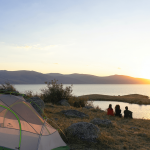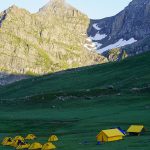
Hunting has long been a part of human history, and its evolution is something to be celebrated. Hunting has seen immense changes in recent years due to changing demographics and emerging trends that have made it accessible to more people across the globe. Much like how technology is revolutionizing almost every other industry, hunting too is being adapted with a renewed focus on safety, sustainability, and conservation. Whether you’re an avid hunter or just starting your adventure into the sport – this blog post will uncover all there is to know about the future of hunting!
Assess your adventure level
Before embarking on any adventure, it’s important to assess your comfort level with different activities and challenges. This will help you make informed decisions about what experiences to seek out and what to avoid.
Here are some questions to ask yourself:
- How physically fit are you?
- Are you comfortable with heights?
- Do you enjoy water activities?
- Are you afraid of enclosed spaces?
- Do you enjoy trying new things?
Answering these questions honestly will give you a better understanding of your adventure level. If you’re a novice adventurer, start with easy activities like hiking or kayaking, and work your way up to more challenging experiences like rock climbing or whitewater rafting. Remember, it’s okay to push yourself outside of your comfort zone but always prioritize your safety and well-being.
Choose the right clothing
When embarking on an adventure, it’s important to wear the right clothing. Here are some tips to keep in mind:
- Lightweight: Choose clothing that is breathable and won’t weigh you down. Avoid heavy cotton fabrics, as they can absorb water and take a long time to dry.
- Durable: Your clothing should be able to withstand the elements. Look for materials that are sturdy, resistant to tearing, and won’t easily wear out.
- Weather-appropriate: Depending on the activity and location, you may encounter different weather conditions. Be prepared for all possibilities, from rain and wind to sunshine and heat. Dress in layers to adjust to changing temperatures.
- Protective: Depending on the activity, you may need to wear protective gear, like helmets or life jackets. Plan and make sure you have the right equipment for the adventure.
- Comfortable: Lastly, make sure your clothing is comfortable. You’ll be moving around a lot, so choose clothing that won’t restrict your movement or chafe your skin.
By choosing the right clothing, you’ll stay comfortable and safe on your adventure.
Bring Along Basic Supplies
No matter the type of adventure, it’s important to bring along some basic supplies to ensure your safety and comfort. Here are some items you should consider packing:
- Map and compass: Even if you’re familiar with the area, it’s a good idea to have a map and compass just in case you get lost.
- Flashlight: If you’ll be out after dark, a flashlight will help you navigate safely.
- First-aid kit: Be prepared for minor injuries and ailments by packing a basic first-aid kit with bandages, antiseptic, and any necessary medications.
- Snacks and water bottles: Stay fueled during your adventure by packing snacks and a reusable water bottle.
- Protective gear: Depending on the activity, you may need to bring along protective gear like a helmet or life jacket.
- Sun protection: If you’ll be out in the sun, bring along sunblock, sunglasses, and a hat to protect your skin.
By packing these basic supplies, you’ll be ready to handle any situation that comes your way during your adventure.
Plan Out an Itinerary
Before embarking on any adventure, it’s important to plan out an itinerary. Here are some tips to keep in mind:
- Decide on a destination: Research the area you’ll be visiting to understand its geography, weather, and potential hazards. Choose a destination that matches your skill level and interests.
- Create a timeline: Determine how long you’ll be gone and what activities you’ll do each day. Keep in mind the time of year and potential weather conditions.
- Plan your route: Research transportation options or directions if you’ll be driving. Make sure to have a backup plan in case of traffic, road closures, or unexpected challenges.
- Share your itinerary: Let someone know where you’ll be going and when you plan to return. Consider sharing your itinerary with a friend or family member, or leaving it with park rangers or a hotel reception desk.
- Stay flexible: Even with a plan, be prepared to change direction if conditions or circumstances change. Allow time for spontaneous detours or opportunities along the way.
By planning out an itinerary, you’ll ensure that you’re prepared for your adventure and stay safe while enjoying the journey.





